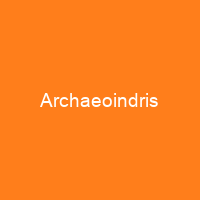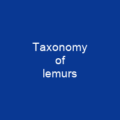Archaeoindris fontoynontii is an extinct giant lemur and the largest primate known to have evolved on Madagascar. It was comparable in size to a male gorilla. It belonged to a family of extinct lemurs known as “sloth lemur’s” Because of its large size, it has been compared to the ground sloths that once roamed North and South America.
About Archaeoindris in brief

Another member of this family is the clade of Indri, sifakas, and woolly le murs, which includes the indri, woolly, and monkey lemurs. Its ancestors were likely arboreal, and this giant sloth lemur has been compared to the extinct giant ground sloths of North and South America. The arms were longer than the legs, but no hand or foot bones have been found for comparison with the other sloth Lemurs for comparison with that of Palaeopsithecus. The most thorough statistical investigation using regression analyses predicts a mass of 160 kg. Misattributions and limited remains have resulted in varying opinions about the way ArchaeoIndris moved in its environment, ranging from tree-dwelling to ground-d Dwelling. The species name was selected in honor of Antoine Maurice Fontoynon, the president of the Académie Malgache, who was reported to have been supervising the excavation when it was discovered. The genus, Archaeoindries, translates to “ancient indri- like lemur,” even though it probably became extinct around 350 BCE. It has been found at only one location: Ampasambazimba, a subfossil site in central Madagascar. The skeleton was massive and robust, and shared many traits with that.
You want to know more about Archaeoindris?
This page is based on the article Archaeoindris published in Wikipedia (as of Nov. 06, 2020) and was automatically summarized using artificial intelligence.







